Using Bird-Friendly Designs in Urban Areas to Improve Biodiversity
As urban areas continue to expand, the need for innovative solutions to enhance biodiversity has never been more critical. Bird-friendly designs in cities not only support avian populations but also contribute to the overall health of our ecosystems. Imagine walking through a bustling city and suddenly hearing the cheerful chirping of birds, or spotting a vibrant feathered friend perched on a balcony. These moments can be revitalizing, reminding us of the beauty of nature even amidst concrete and steel. By integrating bird-friendly elements into urban planning, we can create environments where both people and wildlife thrive.
Incorporating bird-friendly designs involves a multi-faceted approach. It's not just about planting a few trees or installing birdhouses; it requires a comprehensive understanding of how birds interact with urban landscapes. For instance, cities can implement green roofs and vertical gardens, which provide essential habitats for birds while also improving air quality and reducing urban heat. These designs can transform sterile rooftops into lush sanctuaries, making a significant impact on local biodiversity.
Moreover, urban planners can rethink building designs to reduce bird collisions, a common threat in cities. By utilizing materials and architectural styles that are more visible to birds, we can significantly decrease the number of fatalities. Think of it as creating a safe highway for our feathered friends, guiding them through the urban jungle without harm. This proactive approach not only protects birds but also enriches the urban environment, making it more inviting for all forms of life.
Ultimately, the integration of bird-friendly designs is a win-win situation. Not only do these initiatives foster biodiversity, but they also enhance the aesthetic and emotional value of urban spaces. Imagine parks filled with native plants that attract colorful birds, or buildings adorned with birdhouses that invite nesting. Such environments can uplift community spirits and promote a greater appreciation for nature. In the end, it’s about creating a harmonious balance between urban development and the natural world, ensuring that our cities are not just places to live, but vibrant ecosystems where wildlife can flourish.
Understanding the significance of biodiversity in urban settings is crucial. Diverse ecosystems contribute to ecological balance and the overall health of urban environments. Urban areas are often seen as concrete jungles, but they have the potential to be thriving ecosystems. Biodiversity in cities can help in various ways:
- Pollination: Birds play a vital role in pollinating plants, which is essential for food production.
- Pest Control: Birds help control insect populations, reducing the need for chemical pesticides.
- Education: Urban biodiversity can serve as a tool for educating communities about nature and conservation.
Urban areas pose numerous challenges for bird populations, including habitat destruction and pollution. These challenges threaten not only the birds but also the biodiversity of the entire urban ecosystem. Understanding these threats is the first step toward effective conservation.
As cities expand, natural habitats are often destroyed. The impact of habitat loss on bird species is profound. Many birds rely on specific habitats for nesting, feeding, and migration. When these areas are replaced by buildings and roads, birds are left with fewer places to thrive. This loss of habitat can lead to declining bird populations and, ultimately, the extinction of certain species. Conservation efforts in urban planning must prioritize the preservation and restoration of these vital habitats.
The integration of parks and green roofs can mitigate habitat loss. Creating accessible green spaces can support urban bird populations and enhance biodiversity. These spaces not only provide essential resources for birds but also offer residents a connection to nature. Imagine a city filled with parks where families can enjoy picnics while watching birds flutter about. Such environments foster a sense of community and promote mental well-being.
Architectural choices can significantly affect bird safety. Bird-friendly building designs that minimize collisions and provide safe nesting opportunities for urban birds are essential. This part explores how cities can adopt strategies to ensure that buildings are not just functional but also safe for wildlife. For example, using glass that is less reflective can help birds see the barriers they face, reducing the risk of collision. Additionally, incorporating nesting ledges and green facades can create safe havens for birds in urban settings.
Engaging local communities is vital for successful conservation efforts. Community involvement in creating bird-friendly environments and promoting biodiversity initiatives can lead to greater awareness and appreciation for nature. When people feel connected to their environment, they are more likely to participate in conservation efforts. This can be achieved through educational programs, volunteer opportunities, and local events that celebrate urban wildlife.
Practical strategies can be employed to create bird-friendly urban designs. Cities can take actionable steps to support avian populations and improve urban biodiversity. This involves collaboration between city planners, architects, and the community to create spaces that are not only functional but also nurturing for wildlife.
Using native plants in landscaping can attract local bird species. Native flora provides essential food sources and habitats for birds, promoting a vibrant ecosystem. By replacing non-native plants with indigenous species, we can create a welcoming environment for birds while also reducing water usage and maintenance costs.
Installing birdhouses and feeders can provide essential resources for urban birds. These additions foster bird populations in city environments, creating a lively atmosphere filled with chirps and songs. It's a simple yet effective way to enhance urban biodiversity, and it encourages residents to engage with their local wildlife.
- How can I make my balcony bird-friendly? You can add bird feeders, birdhouses, and native plants to attract birds.
- What types of plants are best for attracting birds? Native plants that produce berries and seeds, such as elderberry and sunflowers, are excellent choices.
- How do bird-friendly buildings help? They reduce bird collisions and provide nesting opportunities, promoting safer urban environments for wildlife.
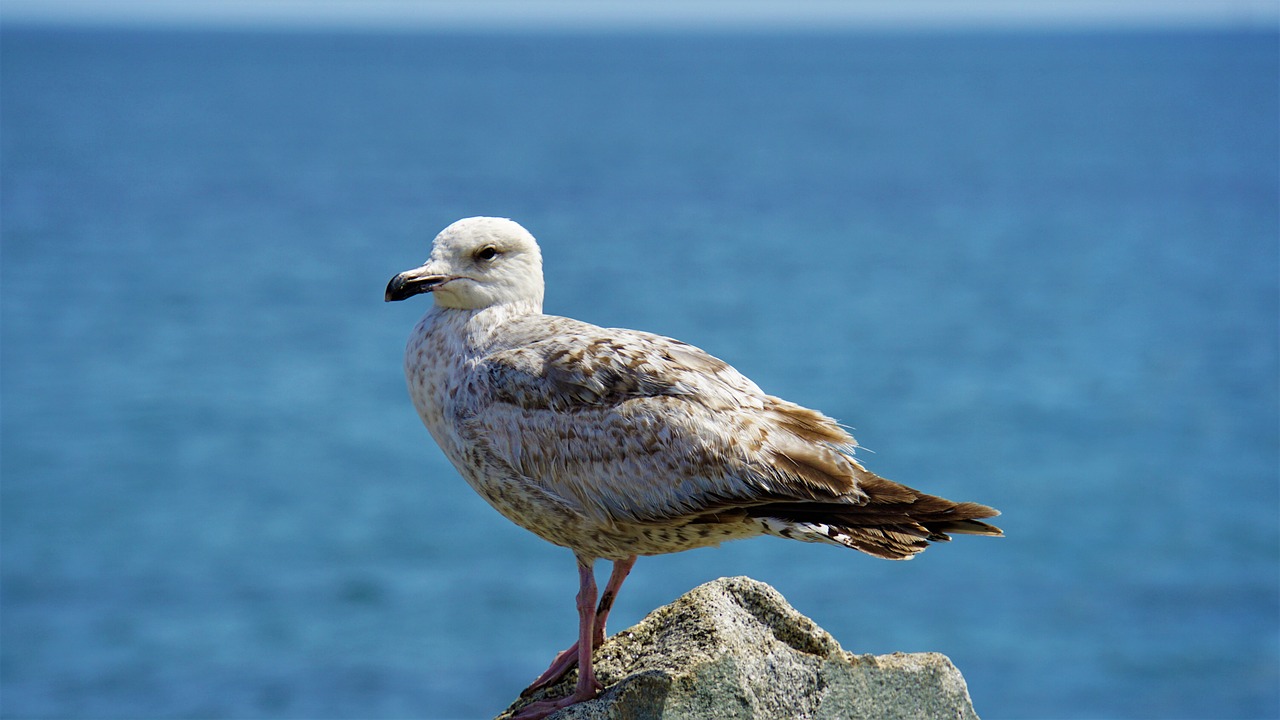
Importance of Urban Biodiversity
Urban biodiversity is not just a buzzword; it’s a vital component of our cities that influences the quality of life for all inhabitants, both human and avian. With more than half of the world's population living in urban areas, understanding the significance of biodiversity in these settings is crucial. Diverse ecosystems contribute to ecological balance, providing essential services such as clean air, water filtration, and climate regulation. Imagine a city where the air is fresher, the parks are alive with chirping birds, and the streets are lined with vibrant greenery. This is not just a dream; it’s a reality that can be achieved through fostering urban biodiversity.
Moreover, urban biodiversity plays a pivotal role in enhancing the resilience of cities against environmental changes. Healthy ecosystems can help buffer against climate change impacts, such as flooding and heatwaves. For example, trees and vegetation can absorb rainwater, reducing runoff and mitigating flood risks. Similarly, diverse plant life can help lower urban temperatures, creating cooler microclimates. In this way, biodiversity acts like a safety net, protecting urban areas from the unpredictable whims of nature.
Furthermore, urban biodiversity enriches our lives by providing aesthetic and recreational benefits. Parks and green spaces filled with various flora and fauna offer residents a respite from the concrete jungle, promoting mental well-being and physical health. Studies have shown that simply being around nature can reduce stress, enhance mood, and boost overall happiness. The presence of birds in urban environments not only adds to the beauty but also serves as a reminder of the interconnectedness of life and the importance of preserving our natural heritage.
To put it simply, urban biodiversity is like the heartbeat of our cities. Without it, we risk losing the very essence of what makes urban life vibrant and sustainable. It’s essential for us to recognize that every bird, plant, and insect plays a role in our ecosystem. By fostering a diverse range of species, we create a thriving urban environment that benefits everyone. So, the next time you hear a bird chirping outside your window, remember: it’s not just a sound; it’s a crucial part of the urban symphony that we all share.
In summary, the importance of urban biodiversity cannot be overstated. It enhances ecological health, provides essential services, and contributes to the well-being of city dwellers. As cities continue to grow and evolve, prioritizing biodiversity should be at the forefront of urban planning and development.
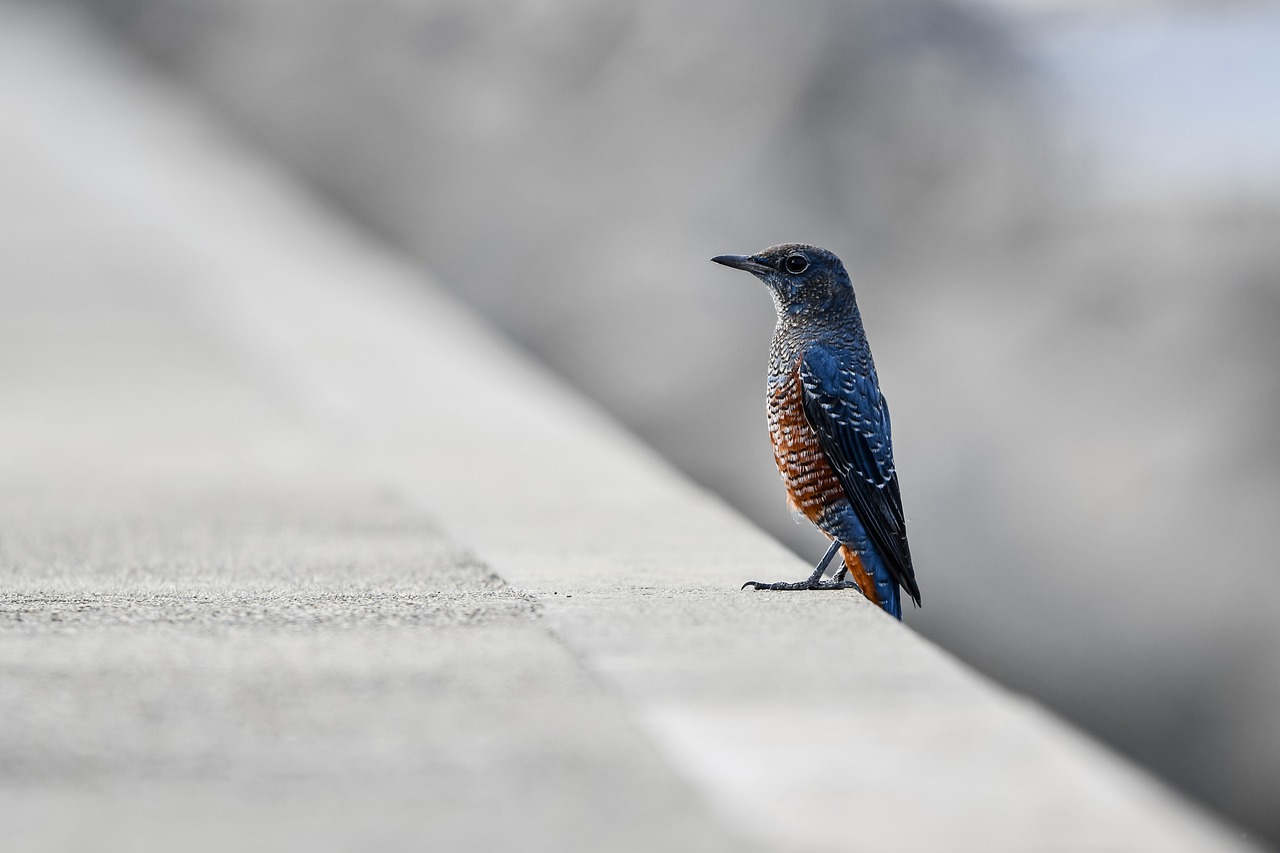
Challenges Faced by Urban Birds
Urban environments, while bustling with life and energy, present a myriad of challenges for our feathered friends. As cities grow and evolve, they often become inhospitable landscapes for birds, leading to a significant decline in their populations. One of the most pressing issues is habitat destruction. As natural habitats are replaced with concrete jungles, birds find themselves with fewer places to nest, forage, and thrive. This loss of habitat not only affects the birds but also disrupts the ecological balance that is vital for a healthy urban ecosystem.
Moreover, pollution is another formidable adversary that urban birds face. From air pollution to water contamination, the quality of the environment deteriorates, making it increasingly difficult for birds to find food and clean water. For instance, birds that rely on insects or native plants may struggle to survive if these populations decline due to pesticide use or habitat loss. The implications of these challenges are dire, as they can lead to reduced biodiversity, which ultimately threatens the health of urban ecosystems.
Additionally, urban landscapes are fraught with dangers that birds must navigate daily. Collisions with buildings, especially glass structures, result in millions of avian deaths each year. To put this into perspective, studies estimate that between 365 million to 1 billion birds die from window collisions annually in the United States alone. This staggering number highlights the urgent need for bird-friendly architectural designs that minimize such risks.
Furthermore, the introduction of non-native species can create additional stress for urban birds. Invasive species often outcompete native birds for resources, leading to a decline in local populations. This competition for food and nesting sites can be particularly detrimental during the breeding season when birds are most vulnerable.
In summary, the challenges faced by urban birds are multifaceted and complex. From habitat loss and pollution to collisions with buildings and competition from invasive species, these factors collectively contribute to the decline of avian populations in cities. Addressing these issues requires a concerted effort from city planners, conservationists, and the community. By understanding these challenges, we can begin to implement effective strategies that support our urban birds and enhance biodiversity.
- What are the main threats to urban birds? Urban birds face threats such as habitat loss, pollution, collisions with buildings, and competition from invasive species.
- How can cities help protect urban birds? Cities can implement bird-friendly designs, create green spaces, and promote community engagement to support avian populations.
- Why is biodiversity important in urban areas? Biodiversity contributes to ecological balance, supports food webs, and enhances the overall health of urban environments.
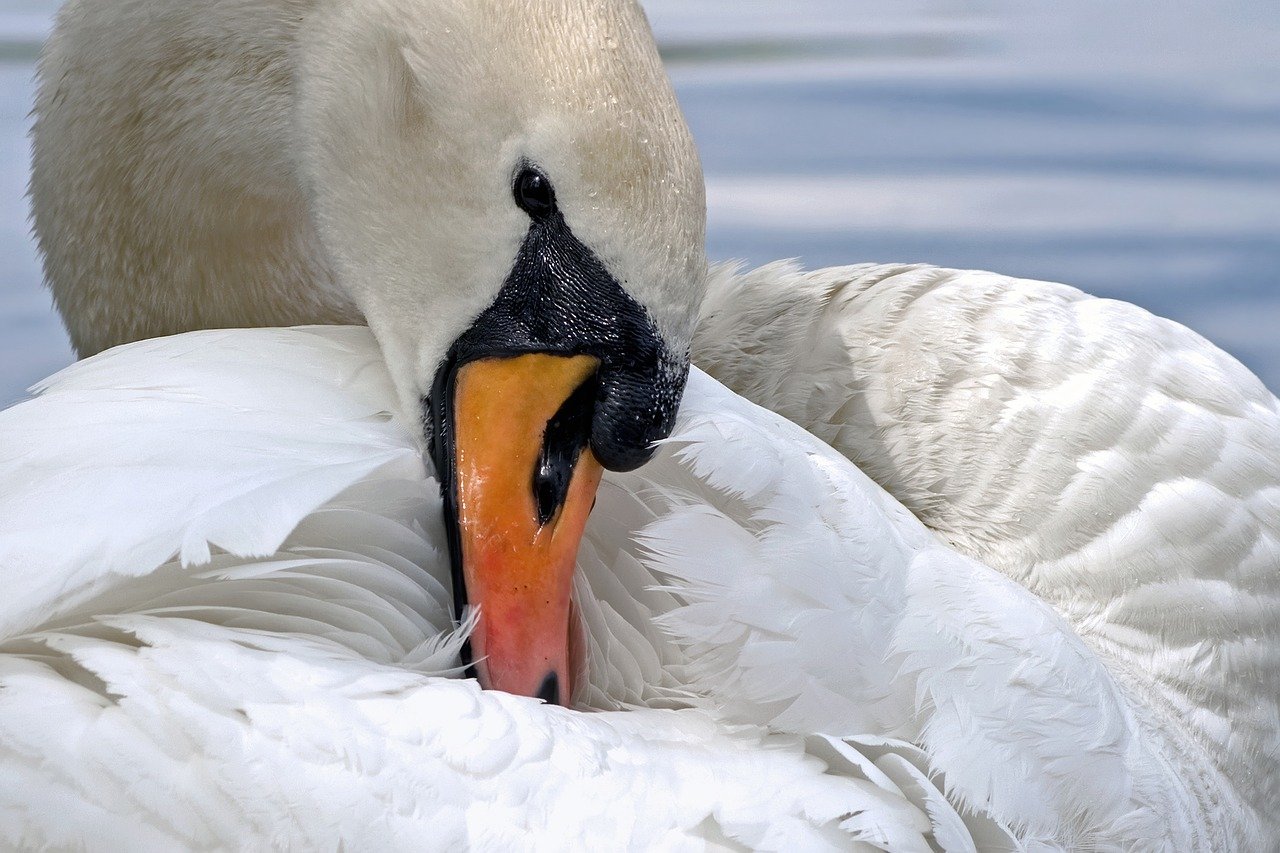
Habitat Loss
As urban areas expand, the relentless march of development often leads to a significant loss of natural habitats. This phenomenon is not just a statistic; it has profound implications for bird populations and the overall health of our ecosystems. When we pave over fields and forests to make way for new buildings and roads, we’re not just removing trees and shrubs; we’re stripping away the very homes that countless bird species depend on. Imagine a bustling city where the chirping of birds is replaced by the constant sound of traffic—this is the reality we face.
Habitat loss can be attributed to several factors, including urbanization, agriculture, and industrial activities. Each of these factors contributes to the fragmentation of the natural landscape, making it increasingly difficult for birds to find safe nesting sites, food, and shelter. For instance, when a forest is cut down to make way for a new housing development, the birds that once thrived in that environment are forced to relocate, often to areas that are already overcrowded or unsuitable for their needs. This displacement can lead to a dramatic decline in bird populations, as many species struggle to adapt to new surroundings.
To put this into perspective, consider the following table that highlights the impact of habitat loss on various bird species:
| Bird Species | Habitat Type | Impact of Habitat Loss |
|---|---|---|
| American Robin | Woodlands | Declining nesting sites |
| Eastern Bluebird | Open fields | Reduced food availability |
| Barn Owl | Farmlands | Loss of hunting grounds |
In light of these challenges, it's clear that conservation efforts must be prioritized in urban planning. Cities have the potential to become sanctuaries for wildlife, including birds, if we start integrating green spaces and preserving existing habitats. This means not just planting trees in parks, but also ensuring that urban developments are designed with nature in mind. By creating corridors that connect fragmented habitats, we can help birds navigate through urban landscapes more safely and effectively.
Moreover, community involvement plays a crucial role in combating habitat loss. When local residents become aware of the importance of preserving natural spaces, they are more likely to advocate for policies that protect these areas. Simple actions, like participating in local conservation projects or supporting legislation aimed at preserving green spaces, can make a significant difference. Together, we can foster a culture of awareness and action that prioritizes the needs of our feathered friends.
- What can I do to help combat habitat loss in my area? You can participate in local conservation efforts, plant native species in your garden, and advocate for policies that protect green spaces.
- How does habitat loss affect other wildlife besides birds? Habitat loss impacts all forms of wildlife, disrupting ecosystems and leading to declines in biodiversity.
- Are there specific bird species that are more affected by habitat loss? Yes, many species that require specific habitats, like wetlands or forests, are particularly vulnerable to habitat loss.
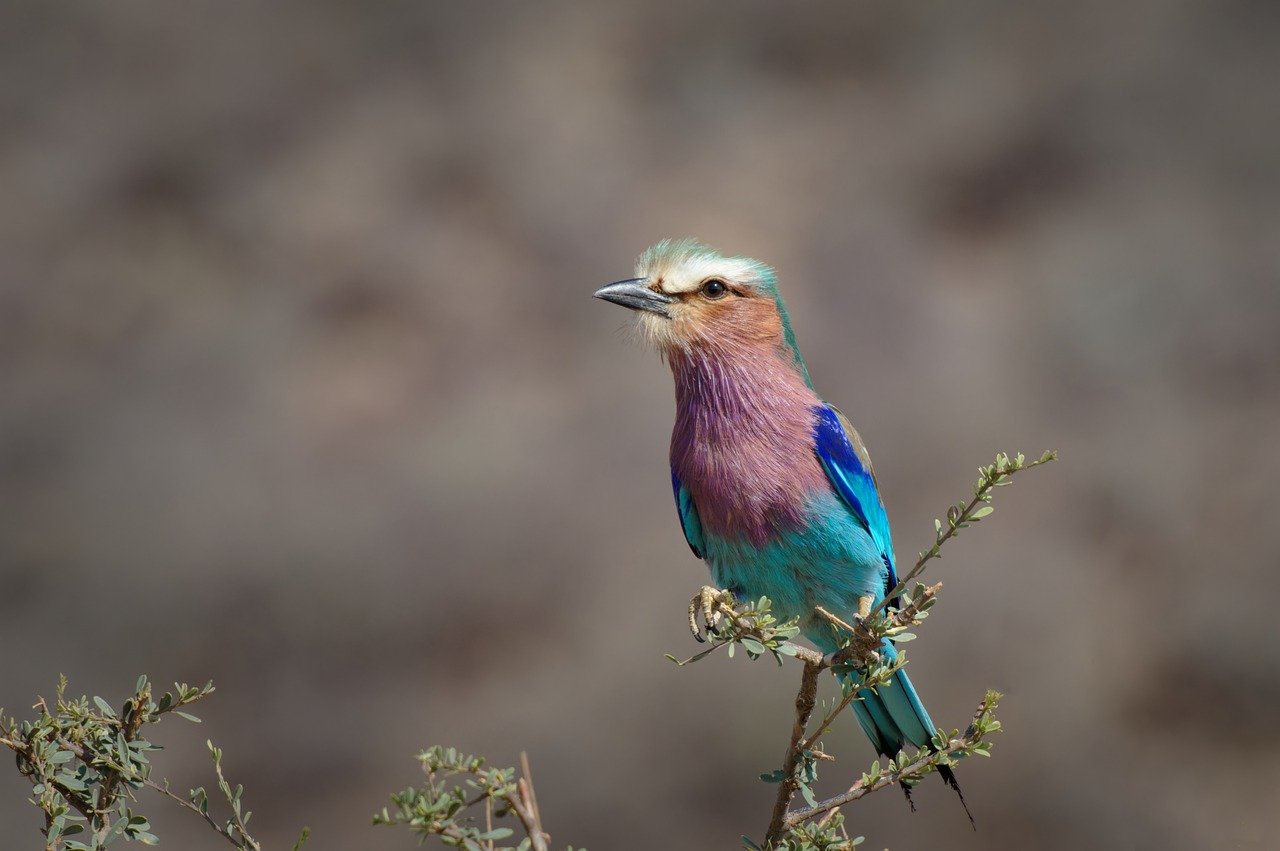
Green Spaces
Urban environments can often feel like concrete jungles, where the hustle and bustle of city life overshadows the beauty of nature. However, the integration of —like parks, community gardens, and green roofs—can transform these landscapes into vibrant ecosystems that support not just human well-being, but also avian populations. Imagine walking through a city park, surrounded by trees and chirping birds; it's not just a pleasant experience, but a vital one for our feathered friends. These green havens provide essential habitats for birds, offering food sources, nesting sites, and safe places to rest during migration.
Moreover, green spaces play a crucial role in mitigating the effects of urbanization. They act as lungs for the city, improving air quality and providing a cooler microclimate. Birds thrive in environments that offer a variety of vegetation, which is why incorporating native plants in these areas is so important. Native flora attracts local insects and seeds, which are fundamental food sources for many bird species. By creating a diverse plant community, we can ensure a steady supply of food, which is particularly crucial during the breeding season when birds need to feed their young.
But how do we go about enhancing these green spaces to make them more bird-friendly? First, we can prioritize the planting of native species that are well-adapted to the local environment. This not only supports birds but also promotes overall biodiversity. Additionally, we can design parks with layered vegetation, providing different heights and types of plants that cater to various bird species. For example, shrubs can provide cover for ground-nesting birds, while taller trees can be home to species that prefer higher perches.
Furthermore, the design of green spaces can include features that cater specifically to birds. Water sources such as bird baths or small ponds can attract birds, especially in urban areas where natural water sources may be scarce. Additionally, incorporating bird-friendly structures like nesting boxes or perches can encourage birds to make these spaces their home. The more we think about how birds interact with their environment, the more we can create spaces that truly support them.
In conclusion, green spaces are not just aesthetic additions to urban landscapes; they are essential components of a healthy ecosystem. By prioritizing the creation and maintenance of these areas, we can foster a diverse range of bird species, contributing to the overall biodiversity of our cities. Let's envision a future where urban areas are not just places of human activity but are also thriving habitats for wildlife. Together, we can make our cities more livable for both people and birds.
- What are green spaces? Green spaces refer to areas of vegetation in urban environments, such as parks, gardens, and green roofs, that provide habitats for wildlife.
- How do green spaces benefit birds? They provide food, nesting sites, and safe resting areas, which are essential for bird populations, especially in urban settings.
- Can I create a bird-friendly garden? Absolutely! You can use native plants, add birdhouses, and install feeders to attract and support local bird species.
- What types of plants should I use? Native plants are best as they are adapted to the local environment and attract local insects that birds feed on.
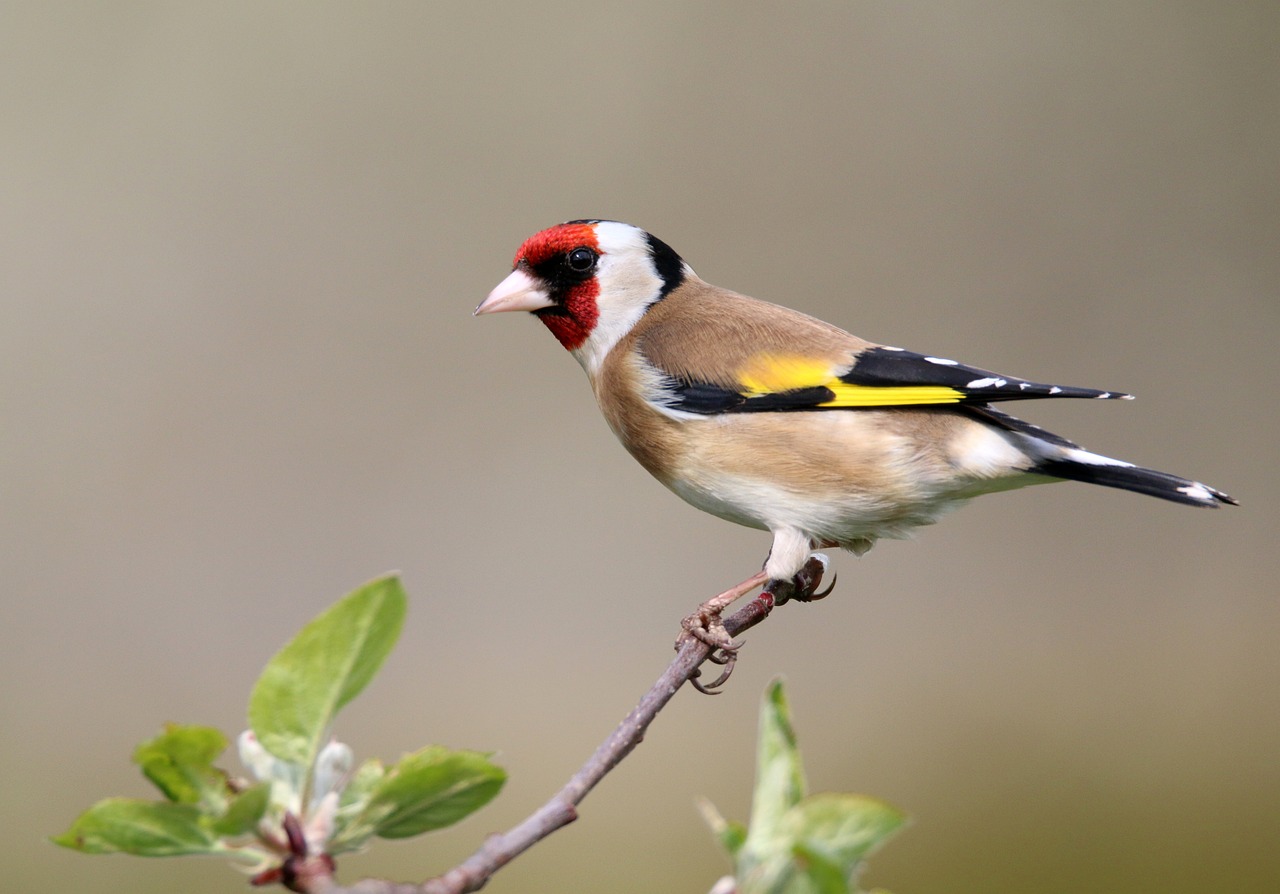
Building Design
When it comes to urban environments, the design of buildings plays a crucial role in supporting bird populations. With cities becoming more crowded and vertical, the architecture we choose can either help or hinder our feathered friends. Have you ever thought about how many birds meet their fate against glass windows? It's a staggering number, and it's entirely preventable! By integrating bird-friendly design principles into our buildings, we can create a safer haven for birds while enhancing the aesthetic appeal of our urban landscapes.
One of the most effective ways to reduce bird collisions is through the use of bird-safe glass. This type of glass is designed to be more visible to birds, often featuring patterns or textures that break up reflections. Imagine walking down a city street and seeing beautiful buildings that not only look great but also serve a purpose in protecting wildlife. This is not just a dream; it’s a reality that can be achieved with thoughtful architectural choices.
Additionally, incorporating green roofs into building designs can provide essential nesting and feeding habitats for urban birds. A green roof isn’t just a trendy addition; it’s a mini-ecosystem that supports various plant and animal life. These roofs can be planted with native flora, which attracts insects and provides food for birds. Moreover, they help in managing stormwater runoff, improving air quality, and reducing the urban heat island effect. Who wouldn't want to have a living, breathing rooftop that contributes to biodiversity?
Furthermore, the layout of buildings can also influence bird safety. For instance, creating setbacks in building designs allows for more open space and reduces the likelihood of birds flying into walls. These thoughtful designs not only enhance the architectural landscape but also create a more inviting environment for birds to thrive. It's like giving birds their own urban sanctuary amidst the hustle and bustle of city life.
Incorporating nesting boxes into building designs is another innovative approach. These can be strategically placed on balconies or ledges, providing birds with safe nesting sites right in the heart of the city. Imagine a bustling urban area where you can spot sparrows and swallows nesting just outside your window! This kind of interaction with nature can foster a sense of community and appreciation for wildlife.
In conclusion, the impact of building design on urban bird populations cannot be overstated. By choosing materials and designs that prioritize bird safety, we can create a harmonious coexistence between urban development and wildlife. It's a small change that can lead to significant improvements in biodiversity. So, as we look to the future of our cities, let’s embrace bird-friendly architecture and make our urban spaces a welcoming home for all creatures.
Q: What is bird-safe glass?
A: Bird-safe glass is specially designed to minimize the risk of bird collisions by incorporating patterns or textures that make the glass more visible to birds.
Q: How can green roofs benefit urban birds?
A: Green roofs provide nesting sites and food sources for birds, while also improving the urban environment by managing stormwater and enhancing air quality.
Q: Why is community involvement important in creating bird-friendly designs?
A: Engaging the community fosters awareness and encourages local residents to participate in conservation efforts, making it easier to implement bird-friendly practices in urban areas.
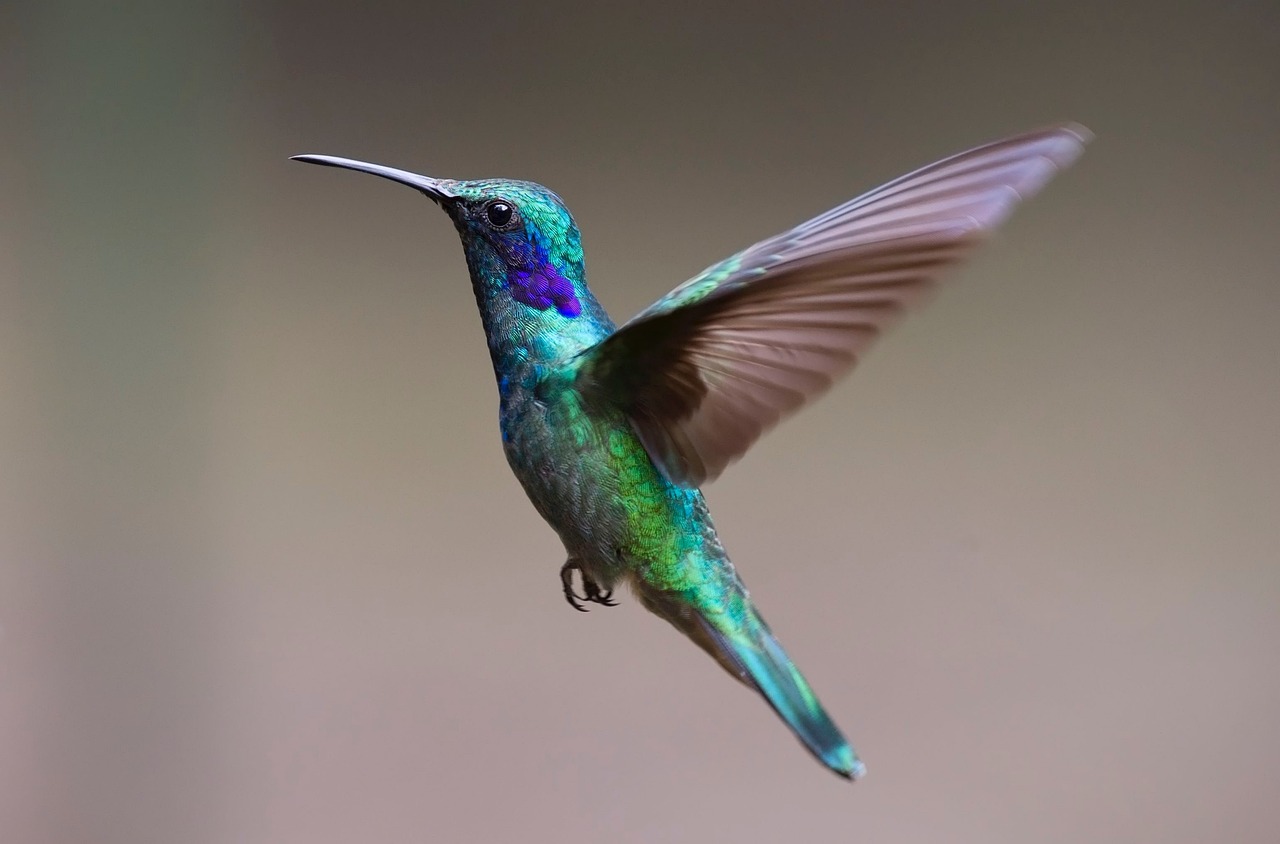
Community Engagement
When it comes to creating bird-friendly urban environments, plays a pivotal role. Imagine a city where residents are not just passive observers but active participants in fostering biodiversity. Engaging local communities can transform urban landscapes into vibrant habitats for birds. But how do we ignite this passion? It begins with awareness and education. By organizing workshops, community clean-up days, and educational programs about the importance of birds in our ecosystem, we can inspire people to take action.
Moreover, fostering a sense of ownership is crucial. When community members feel that they are part of the solution, they are more likely to invest time and resources into maintaining bird-friendly practices. For instance, neighborhood groups can adopt local parks, implementing bird-friendly landscaping practices or installing birdhouses. This not only enhances the habitat for birds but also strengthens community ties. Just think about it: when people come together for a common cause, they create a ripple effect that can lead to significant environmental improvements.
To illustrate the impact of community engagement, consider the following table that showcases successful community-driven initiatives across various urban areas:
| City | Initiative | Outcome |
|---|---|---|
| San Francisco | Bird-Friendly Neighborhoods Program | Increased bird species diversity by 30% in participating areas |
| New York | Community Green Roofs | Provided nesting sites for over 20 bird species |
| Chicago | Urban Bird Walks | Raised awareness and participation in local bird conservation efforts |
These initiatives demonstrate that when communities come together, they can achieve remarkable results. Additionally, social media can be a powerful tool in this endeavor. By creating dedicated online platforms or groups, residents can share their experiences, tips, and successes in attracting and supporting urban birds. This not only fosters a sense of community but also encourages others to join in the effort.
Ultimately, the key to successful community engagement is to make it fun and accessible. Organizing birdwatching events, creating art projects related to local bird species, or even hosting friendly competitions for the best bird-friendly gardens can spark interest and enthusiasm. By involving people of all ages, we can cultivate a culture of respect and appreciation for our feathered friends, ensuring that our urban spaces are not just concrete jungles but thriving ecosystems.
- How can I get involved in bird conservation in my community? Look for local wildlife organizations or community groups that focus on urban biodiversity. Participating in events or volunteering can make a significant impact.
- What types of plants are best for attracting birds? Native plants are typically the best choice as they provide food and shelter for local bird species. Consider consulting with local nurseries for recommendations.
- Can I create a bird-friendly space in a small apartment? Absolutely! Even small balconies can support bird-friendly practices by adding plants, bird feeders, and birdhouses.
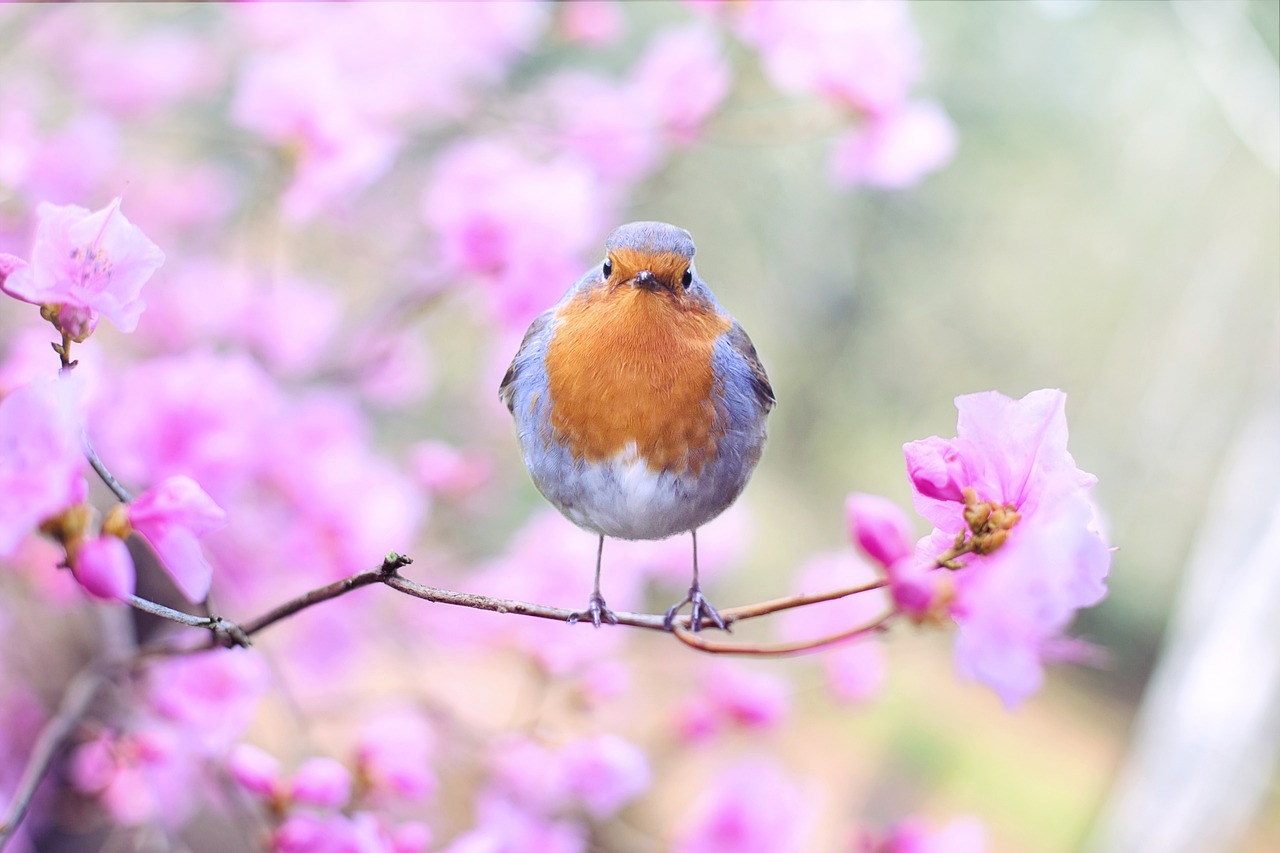
Implementing Bird-Friendly Practices
Urban environments can be challenging for our feathered friends, but the good news is that we can take actionable steps to create bird-friendly practices that not only support avian populations but also enhance the overall biodiversity of our cities. By integrating simple yet effective strategies, we can transform concrete jungles into vibrant habitats that encourage birds to thrive. Imagine a city where the chirping of birds fills the air, signaling a healthy ecosystem—this is not just a dream; it's an achievable reality!
One of the most impactful ways to support birds in urban areas is through native plant landscaping. Native plants are adapted to the local environment and provide essential food and shelter for birds. When we choose to plant species that are indigenous to our region, we not only create a more sustainable landscape but also attract local bird species that rely on these plants for survival. For instance, native shrubs can offer berries for birds, while flowering plants can attract insects that serve as food for them. The table below illustrates some popular native plants and the bird species they attract:
| Native Plant | Bird Species Attracted |
|---|---|
| Eastern Red Cedar | American Robin, Cedar Waxwing |
| Black-eyed Susan | Goldfinch, Sparrows |
| Milkweed | Hummingbirds, Monarch Butterflies |
In addition to landscaping, the installation of birdhouses and feeders can significantly bolster urban bird populations. These structures provide safe nesting opportunities and reliable food sources, especially in areas where natural habitats have been compromised. When placing birdhouses, it’s important to consider the specific needs of different bird species, such as the size of the entrance hole and the height of the house. A well-placed feeder stocked with seeds can attract a variety of birds, turning your backyard into a lively sanctuary. Just think about the joy of watching colorful birds flock to your garden!
Moreover, it’s essential to educate the community about the importance of these practices. Engaging local residents in bird-friendly initiatives can lead to a collective effort that amplifies the impact of individual actions. Hosting workshops or informational sessions can empower community members to participate in creating bird-friendly environments. Imagine a neighborhood where everyone is on board, planting native species, installing feeders, and sharing their birdwatching experiences. This not only enhances biodiversity but also fosters a sense of community and connection to nature.
To further enhance our urban landscapes, we can also advocate for policies that promote bird-friendly designs in public spaces. This includes designing parks with bird habitats in mind, ensuring that new developments incorporate green spaces, and encouraging the use of bird-safe materials in construction. By actively participating in urban planning discussions, we can influence the creation of environments that are not just functional for humans but also hospitable for wildlife.
In conclusion, implementing bird-friendly practices in urban areas is not only beneficial for birds but also enriches the lives of city dwellers. By planting native species, installing birdhouses, and engaging the community, we can create a harmonious balance between urban development and wildlife conservation. So, let’s roll up our sleeves and get to work—our feathered friends are counting on us!
- How can I attract more birds to my garden? Plant native flowers and shrubs, install bird feeders, and provide water sources.
- What types of birdhouses should I use? Choose birdhouses designed for specific species, considering factors like entrance size and height.
- Can urban areas really support biodiversity? Absolutely! With thoughtful planning and community engagement, urban areas can become thriving ecosystems.

Native Plant Landscaping
When it comes to creating a vibrant urban ecosystem, is a game changer. Imagine walking through a city park filled with lush greenery that not only beautifies the space but also supports local wildlife. By incorporating native plants into urban landscapes, we can create habitats that are more than just pretty—they are vital for the survival of our feathered friends. Native plants are adapted to the local climate and soil conditions, which means they require less water and maintenance compared to non-native species. This is a win-win for both the environment and the city’s maintenance budget.
One of the most significant benefits of using native plants is their ability to attract local bird species. Birds have evolved alongside these plants, relying on them for food, shelter, and nesting materials. For instance, berry-producing shrubs like serviceberry and elderberry can provide a feast for birds during the spring and summer months. Not only do these plants offer nourishment, but they also create a safe haven for birds to nest and raise their young. By planting a diverse range of native flora, we can ensure that our urban spaces are bustling with avian life.
Moreover, native plants play a crucial role in maintaining ecological balance. They support a variety of insects, including pollinators like bees and butterflies, which in turn help fertilize the plants. This interconnectedness is essential for a thriving ecosystem. In contrast, non-native plants often disrupt local ecosystems by attracting pests or outcompeting native species. Thus, opting for native landscaping is not just about aesthetics; it’s about fostering a healthy environment for all living beings.
To illustrate the impact of native plant landscaping, consider this simple table:
| Native Plant | Benefits for Birds | Blooming Season |
|---|---|---|
| Serviceberry | Provides berries for food | Spring |
| Elderberry | Attracts insects and provides berries | Summer |
| Milkweed | Supports monarch butterflies, a food source for birds | Summer |
Incorporating native plants into urban landscaping isn’t just beneficial for birds; it also enhances the overall aesthetic and ecological health of the city. Picture a vibrant urban landscape where the sounds of chirping birds fill the air, and colorful flowers bloom throughout the seasons. This vision can become a reality with thoughtful planning and community involvement. By encouraging residents and businesses to adopt native planting practices, cities can transform their environments into bird-friendly havens.
In conclusion, native plant landscaping is a powerful tool in the fight to improve urban biodiversity. It not only supports local bird populations but also fosters a sense of community and connection to nature. So, the next time you’re considering what to plant in your garden or local park, think native. You’ll be contributing to a healthier ecosystem and creating a sanctuary for our beloved birds.
- What are native plants? Native plants are species that naturally occur in a specific region and have adapted to the local climate and soil conditions.
- How do native plants benefit urban birds? Native plants provide food, shelter, and nesting materials that are essential for the survival of local bird species.
- Can I create a bird-friendly garden with non-native plants? While some non-native plants can attract birds, they often do not provide the same ecological benefits as native species.
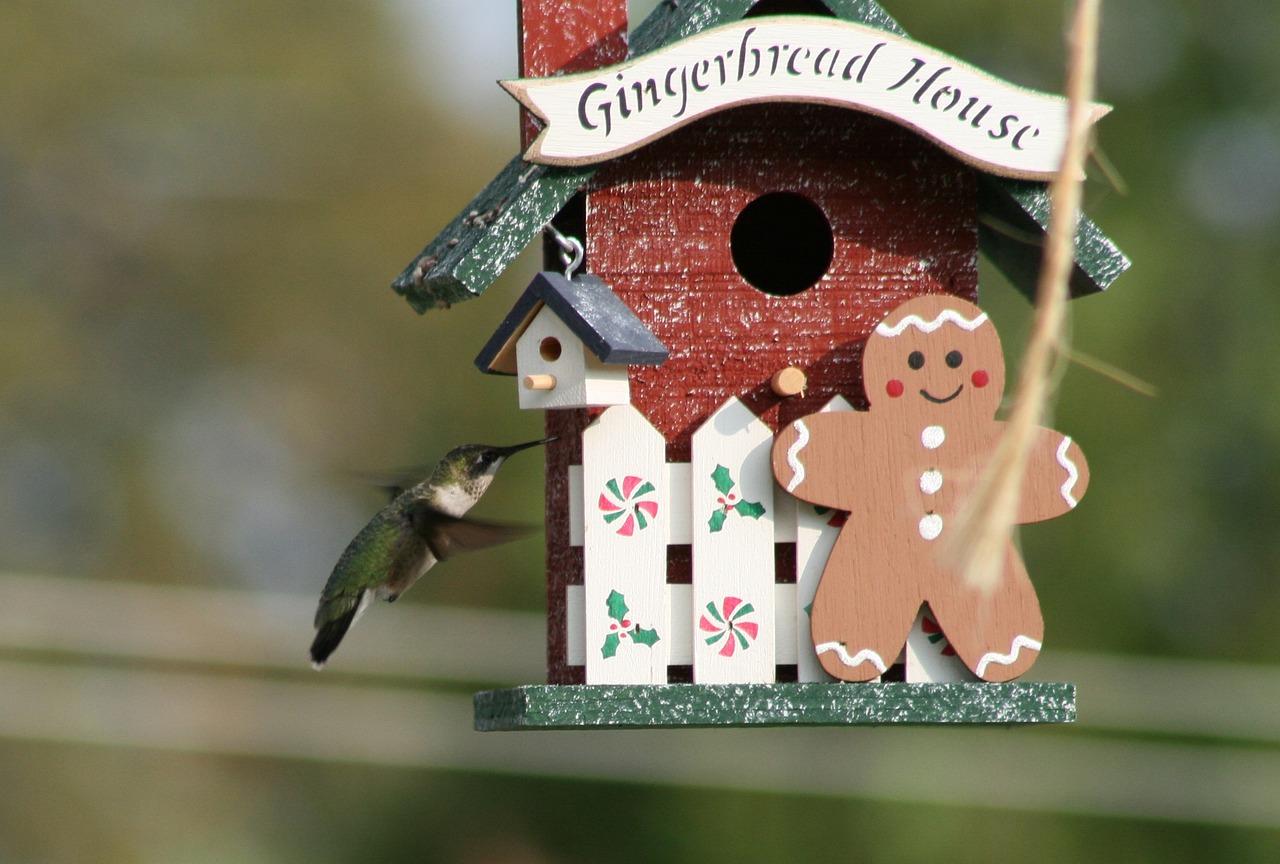
Birdhouses and Feeders
When it comes to creating a bird-friendly urban environment, birdhouses and feeders play a pivotal role. These simple yet effective structures can transform a bland city landscape into a vibrant haven for avian life. Imagine walking through your neighborhood and hearing the sweet melodies of birds chirping happily in the trees; it’s not just a dream but a reality that can be achieved with a little effort and creativity.
Birdhouses provide essential shelter for various species, offering a safe haven away from predators and harsh weather. They are not just wooden boxes; they are carefully designed homes that cater to the specific needs of different birds. For instance, a bluebird house differs from a wren house in size and entry hole dimensions. When constructing or purchasing birdhouses, it’s crucial to consider the following factors:
- Material: Use untreated wood to avoid harmful chemicals.
- Ventilation: Ensure there are holes for airflow to keep the interior cool.
- Predator Protection: Design features that deter raccoons and cats.
On the other hand, bird feeders are like inviting a buffet to your backyard. They provide a reliable food source, especially during harsh winters when natural food is scarce. By offering a variety of seeds, you can attract a diverse range of birds. Popular options include sunflower seeds, suet, and mixed seeds, each catering to different species. Setting up a feeder is as easy as hanging it in a visible location, preferably near trees or shrubs that provide cover. This not only makes it easier for birds to find food but also offers them a safe spot to retreat if they sense danger.
Moreover, the placement of these feeders and houses is crucial. Ideally, they should be positioned at least 10 feet away from windows to minimize the risk of collisions, which is a significant threat to urban birds. If you’re worried about window strikes, consider using decals or bird-safe window films to enhance visibility. Additionally, placing birdhouses at varying heights can cater to different bird species, as some prefer higher nesting sites while others are more comfortable closer to the ground.
Creating a bird-friendly environment is not just about installing birdhouses and feeders; it’s about fostering a community of nature lovers. Encourage your neighbors to join in on the fun! Organize a neighborhood birdwatching day or a DIY birdhouse-building workshop. You’ll be surprised at how many people are eager to contribute to this cause. Not only does this strengthen community ties, but it also promotes a shared responsibility for preserving urban biodiversity.
In conclusion, incorporating birdhouses and feeders into urban settings is a straightforward yet impactful way to enhance biodiversity. These structures not only provide essential resources for our feathered friends but also enrich our lives with their presence. So why not take the plunge? Set up a feeder or build a birdhouse, and watch as your urban oasis transforms into a lively sanctuary for birds!
1. How can I attract more birds to my yard?
To attract more birds, provide a variety of food sources, ensure fresh water is available, and create a safe environment with shelter options like trees and shrubs.
2. What types of birdhouses should I use?
Choose birdhouses based on the species you want to attract. Research their nesting preferences and select houses that meet their specific needs.
3. How often should I clean my bird feeders?
Clean your bird feeders every two weeks, or more frequently if they become dirty or moldy, to prevent the spread of disease among birds.
4. Can I use old materials to build birdhouses?
Yes, but ensure that any materials used are safe and free from harmful chemicals. Avoid using treated wood or materials that can splinter.
5. What should I do if I find a baby bird on the ground?
If you find a baby bird, observe it first. If it’s fully feathered and hopping, it’s likely fledging. If it’s not, contact a local wildlife rehabilitator for guidance.
Frequently Asked Questions
- Why is urban biodiversity important?
Urban biodiversity plays a crucial role in maintaining ecological balance. It supports various species, including birds, which contribute to pest control, pollination, and overall ecosystem health. By enhancing biodiversity, cities can create healthier environments for their residents and improve quality of life.
- What challenges do urban birds face?
Urban birds encounter numerous challenges, including habitat loss due to city expansion, pollution, and collisions with buildings. These factors can lead to declining bird populations, which in turn affects the overall biodiversity of urban areas.
- How can green spaces help urban birds?
Green spaces such as parks and green roofs provide essential habitats for urban birds. They offer food sources, nesting sites, and refuge from urban hazards, helping to sustain bird populations and promote biodiversity within city landscapes.
- What are bird-friendly building designs?
Bird-friendly building designs incorporate features that minimize the risk of bird collisions and provide safe nesting opportunities. This can include using window films, installing bird-safe glass, and creating ledges that act as perches, all aimed at protecting avian species in urban environments.
- How can communities engage in bird conservation?
Community engagement is vital for bird conservation efforts. Local residents can participate in initiatives like creating bird-friendly gardens, organizing clean-up events, and advocating for policies that protect urban biodiversity. Involvement fosters a sense of stewardship and helps raise awareness about the importance of birds in urban ecosystems.
- What practical strategies can cities implement for bird-friendly designs?
Cities can adopt several practical strategies, such as promoting native plant landscaping, which attracts local bird species, and installing birdhouses and feeders to provide essential resources. These actions can significantly enhance urban biodiversity and support avian populations.
- Why should we use native plants in landscaping?
Using native plants in landscaping is beneficial because they are adapted to local climates and soil conditions, making them easier to maintain. They also provide the right food and habitat for local bird species, ultimately supporting biodiversity and creating a thriving ecosystem.
- How do birdhouses and feeders contribute to urban bird populations?
Birdhouses and feeders offer essential resources for urban birds, such as nesting sites and food. By providing these amenities, cities can create safe havens for birds, encouraging them to thrive in urban environments and helping to sustain their populations.



















